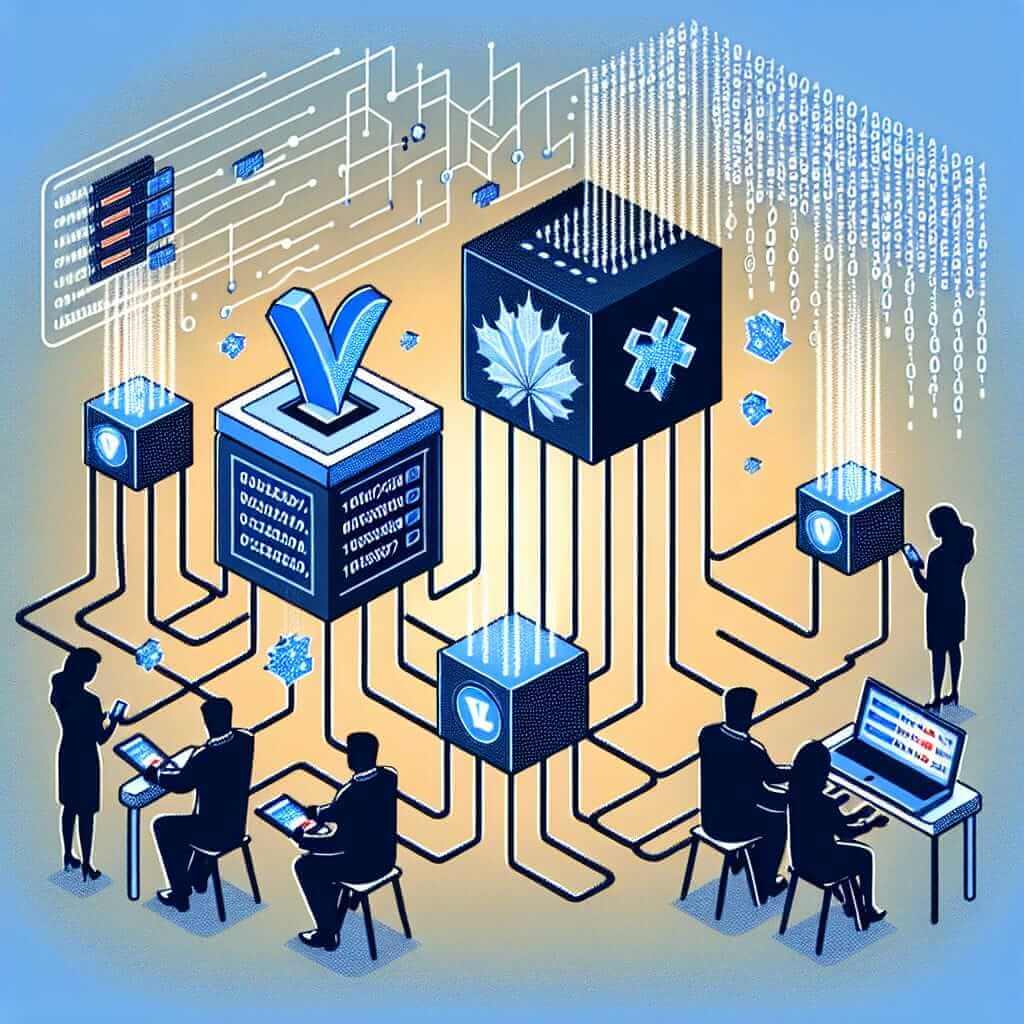The Reading section of the IELTS exam seeks to test a candidate’s ability to understand and interpret written texts. One of the important areas you might encounter is related to technology and innovations, which are increasingly relevant in our modern world. A frequently discussed topic is “How is blockchain technology being used in digital voting systems?” This subject is popular due to its significant implications for security and transparency in elections.
Given the prevalence and growing interest in this subject, there’s a high probability of encountering similarly themed passages in the IELTS exam. This article will provide you with a detailed reading passage, relevant questions, and extensive explanations to help you sharpen your Reading skills for the IELTS test.
Main Content
IELTS Reading Passage
Digital Voting Systems Enhanced by Blockchain Technology (Medium Text)
Digital voting systems are being increasingly adopted across various countries to streamline the election process. However, concerns regarding voter fraud, security, and transparency have always been major issues. Blockchain technology, known primarily for its use in cryptocurrencies, is being explored as a solution to these challenges.
Blockchain constitutes a decentralized ledger recording all transactions across numerous computers so that the recorded information is immutable and transparent. Its potential application in digital voting systems offers some distinct advantages:
Firstly, blockchain can provide a transparent and tamper-proof voting process. Each vote is recorded as a transaction on a double-entry ledger. Because blockchain is decentralized and consists of multiple nodes, tampering with the recorded votes becomes exceedingly complex and resource-intensive.
Secondly, blockchain offers end-to-end verifiability. Voters can verify whether their votes have been recorded correctly and counted accurately without risking their anonymity. This makes the entire voting process more transparent and increases public trust in the election outcomes.
The implementation of blockchain in voting systems can also address accessibility issues. Traditional voting methods can be restrictive, compelling voters to be physically present at polling stations. Blockchain allows online voting from any location, ensuring that citizens, including those abroad or with mobility challenges, can participate in the electoral process.
However, despite these benefits, the adoption of blockchain in digital voting is not without challenges. Technical complexities, high costs, the need for robust cybersecurity measures, and the necessity for regulatory adjustments pose significant barriers. Research and pilot programs continue to explore solutions to these challenges, exploring scalability and effectiveness before widespread adoption.
In conclusion, leveraging blockchain technology in digital voting systems promises to mitigate critical issues such as fraud, inaccessibility, and lack of transparency, but careful consideration and gradual implementation are crucial for success.
IELTS Reading Questions
Multiple Choice Questions
-
What is the primary benefit of using blockchain in digital voting systems?
- A. Reduced cost
- B. Increased transparency and tamper-proof voting process
- C. Faster result compilation
- D. Improved voter turnout
-
How does blockchain ensure the votes are tamper-proof?
- A. By using a centralized server
- B. Through double-entry ledger recording on multiple nodes
- C. By allowing physical verification of votes
- D. Sending confirmation emails to voters
Identifying Information (True/False/Not Given)
-
Blockchain technology is already widely used in national elections around the world.
- True
- False
- Not Given
-
The cost of implementing blockchain technology in voting systems is negligible.
- True
- False
- Not Given
Answer Key
Multiple Choice Questions
-
B
- Explanation: The passage mentions that blockchain offers a transparent and tamper-proof process by recording each vote as a transaction on a double-entry ledger distributed across multiple nodes.
-
B
- Explanation: Blockchain’s security is ensured by its decentralized nature and the recording of transactions on multiple nodes, making tampering extremely complex.
Identifying Information (True/False/Not Given)
-
False
- Explanation: The passage suggests that blockchain is being “explored” and does not indicate its widespread use.
-
False
- Explanation: The text mentions high costs as one of the significant barriers to adopting blockchain in digital voting systems.
Common Mistakes and Tips
- Misinterpreting key details: Always read carefully and ensure you understand the main points before choosing an answer.
- Not distinguishing between opinion and fact: Look for phrases that indicate uncertainty or ongoing exploration rather than confirmed facts.
- Using elimination methods: If you are uncertain about an answer, eliminate obviously incorrect choices to improve the odds of selecting the right one.
Vocabulary Highlights
-
Immutable: (adjective) /ɪˈmjuːtəbl/ – unchanging over time or unable to be changed.
- Example: Blockchain creates an immutable record of all transactions.
-
Verifiability: (noun) /ˌverəˈfaɪəˈbɪləti/ – the quality of being able to be verified or confirmed.
- Example: Blockchain offers end-to-end verifiability of the voting process.
Grammar Insight
- Complex Sentences: Complex sentences are used to show the relationship between ideas. For instance:
- “Because blockchain is decentralized and consists of multiple nodes, tampering with the recorded votes becomes exceedingly complex and resource-intensive.”
- Structure: [Main clause], [Dependent clause].
Conclusion
Preparation is key to success in the IELTS Reading section. Understand the types of questions you may face, practice with realistic passages, and expand your vocabulary and grammatical range. Engage thoroughly with passages about current and relevant technologies like blockchain in voting systems to stay ahead in your preparation.
General Tips for High Scores in IELTS Reading
- Practice Regularly: Consistency is vital; practice reading daily.
- Enhance Vocabulary: Focus on learning new words and phrases.
- Time Management: Improve your speed without compromising accuracy.
- Understand Question Types: Be familiar with all types of IELTS Reading questions.
 Blockchain Voting Process
Blockchain Voting Process
Happy studying, and good luck with your IELTS preparation!


